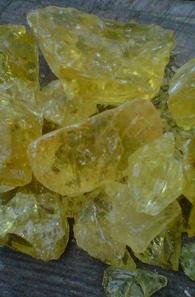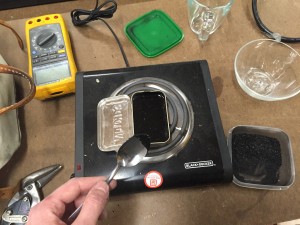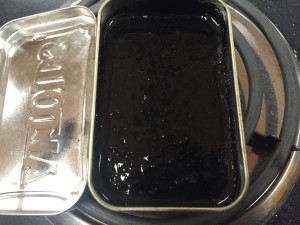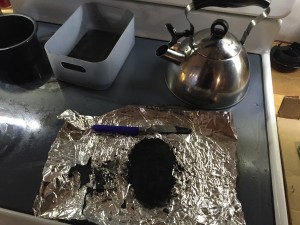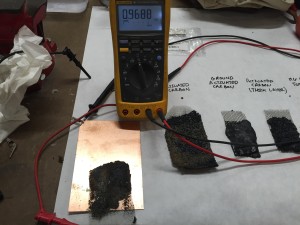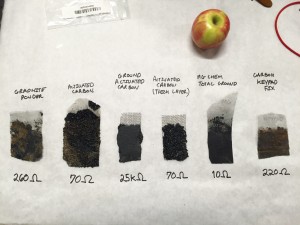This week I began testing mixtures of carbon and the pine resin:
My first test uses activated carbon from an aquarium filter ground in a coffee grinder. I mixed this with melted pine resin. The resin starts to liquify with a small amount of heat. A hair dryer will cause it to bubble. I mixed in the carbon dust and spread the hot mixture on a stainless steel mesh.
The result was an electrode with too high of a resistance. Somewhere in the neighborhood of 25KOhms between the surface of the mix and the steel mesh.
I then found mixing full carbon granules into the pine sap resulted in a lower resistance. I went ahead and tested several mixtures of pine sap and carbon. I also tried some graphite dust mixed with the sap, and two commercial carbon based paints applied to steel mesh as well. Here are the two products:
http://www.amazon.com/MG-Chemicals-Conductive-Coating-Aerosol/dp/B008OA931A
http://www.amazon.com/Keypad-Restore-Conductivity-Carbon-Copper/dp/B0026PRMVM
I tested each electrodes resistance by pressing them down onto a copper plate wired to one side of my multimeter, and wired the other side to the stainless steel mesh in each sample. I took care to make sure the mesh did not contact the copper plate directly.
The large granules mixed with the pine sap seem to perform pretty well. My next step is to build an electrode with a larger surface area in order to increase the voltage and current output. I might try building the water container entirely out of the carbon electrode. I also want to try and eliminate the steel mesh. Im not sure if the resistance is low enough across mixture to just attach a lead on one side without an added conductive plane.
